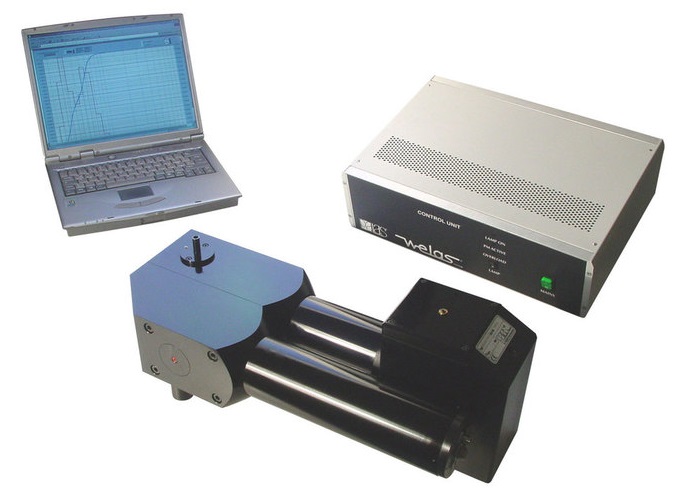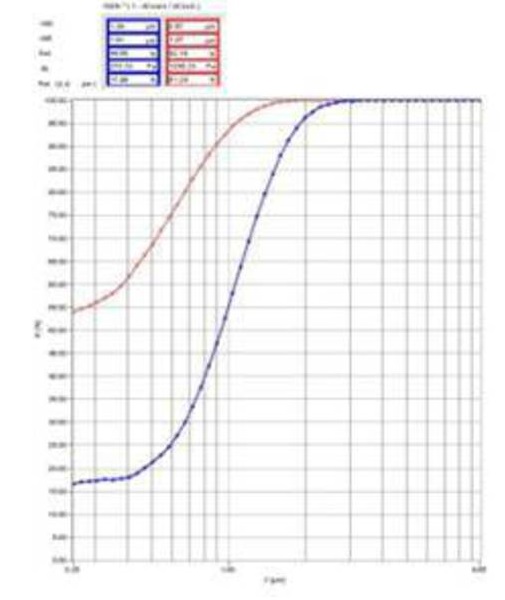Model Description
Quality assurance and the development of filters/separators/traps should preferably be performed under test conditions that are relevant to the actual conditions encountered in practice. For this reason, oil separators must be tested at high temperatures of up to 120°C and, depending on the type of application, at high pressures.
With the modular test system HMT 1000, oil separators (e.g. for the separation of blow-by aerosols in internal combustion engines or for the separation of oil mist downstream of compressors) are quickly and accurately characterized and, in particular, successfully tested under practically relevant conditions through isothermal particle measurements up to 120°C:
- Fraction separation efficiency
- Burden / hold time
- Total separation efficiency / gravimetric analysis
- Pressure loss
Thanks to the modular layout, the individual components of the test rig, such as the high-resolution heatable light scattering spectrometer welas® digital 1000 H, the heatable dilution systems KHG 10 D and the heatable aerosol generator PLG 2100, can be simply removed from the HMT 1000 and used for other applications, e.g. measurements directly on the engine.
For many years, numerous companies all around the world have profited from the advantages of the heatable and pressure-resistant Palas® test components for isothermal and isobaric particle size and particle quantity measurements on oil mists.
Palas® HMT 1000 filter test rigs have been used internationally with great success in industry since 2001.
The heart of the HMT 1000 is the light scattering spectrometer welas® digital 1000, which measures the particle size and the number of particles (and therefore the concentration) independently of each other but at the same time. With the aid of the welas® digital 1000 it is possible to perform very quick, clear, reproducible and isothermal measurements.

Fig 1: welas® digital 1000
Advantages of optical particle measurements over purely gravimetric measurements:
Conventional quantitative gravimetric determinations are often not quick or sensitive enough and provide no information about the particle size distribution.
Thanks to the excellent correlation between the quantitative distribution measurement and the gravimetric analysis, very fast and volume-relevant testing of the oil separators is assured.
The determination of the clean gas concentration can be performed within 1 minute using the welas® digital system.
Why use isothermal measurements?
The viscosity of the oil – and therefore the particle sizes and particle concentrations in the oil mist – varies as a function of the engine temperature. For this reason, oil separators must be tested at different temperatures, i.e. with different particle sizes (up to approx. 5-8 µm) and particle concentrations (approx. 105 to 107 particles/cm3) as well as different volume flows, in order to clearly characterize them in terms of their capacity to separate.
Changes to the separation properties of the separator, e.g. due to the change in volume flow, temperature, filter burden etc. must be clearly determined through a reliable online measurement or in-situ measurement.
In order to avoid not only condensation effects, but also evaporative effects, on the HMT 1000 the entire aerosol guide, including the preparation, sampling and measurement volume, can be heated to 120°C. As a result, measurements of the isothermal fraction separation efficiency can be performed.
Isothermal in-situ measurement, e.g. on the engine
The HMT 1000 test system is mobile and has a modular layout. As a result, the individual components can also be used for other tests and particle measurements, e.g. in-situ measurements on the engine.

Fig. 2: Isothermal particle sampling and in-situ measurement
Automatic measurement data acquisition with the Palas® FTControl software
The software has been tried and tested in practice and enables almost fully-automated characterization of oil mist separators. This means that the results are independent of the person operating the test rig (see "Software" product group: FTControl).
Test rig control:
- Automated control of the volume flow
- Automated activation process for the aerosol generator
- Automatic switching between raw gas / clean gas measurement point
- Automatic temperature regulation
- Evaluation and recording of measurement signals, e.g. Dp, rel. humidity, temperature, volume flow, absolute pressure etc.
Automatic measurement process:
- Automatic evaluation of the pressure loss curve
- Automatic measurement of the fraction separation efficiency
- Automatic evaluation of the pressure loss curve under varying burden states, incl. measurement of the fraction separation efficiency

Fig 3: Comparison of different oil separators